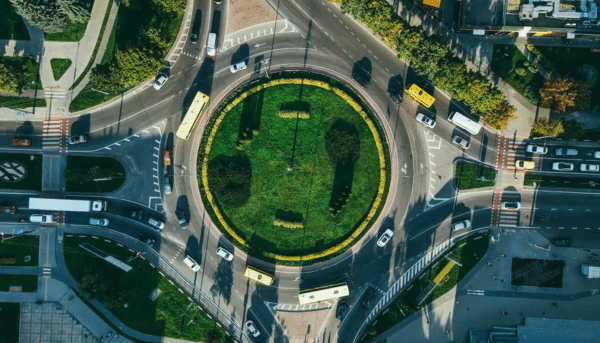A circular economy can a pathway to a low carbon future
By Nicole Garofano, Head of Circular Economy Development at Planet Ark
Amid the rising tide of environmental crises, Australia stands at a crossroads. Our collective future on the planet, our ecosystems’ health, and our businesses’ prosperity hang in the balance. It’s time to recognise that a circular economy isn’t just an idealistic dream; it’s the pragmatic pathway to a sustainable and profitable future.
The Climate Council recently reaffirmed that Australia should strive for a 75 per cent emissions cut by 2030 and net zero emissions by 2035. But according to an Ellen MacArthur Foundation study, only 55 per cent of the world’s emissions can be addressed through energy efficiency and a transition to renewable energy. The other 45 per cent reduction is in the supply chain – how we use lands, produce food and products, transport goods, and design and construct buildings and infrastructure.
The solution to these challenges lies in a concept gaining traction in Australia – the circular economy – where products are designed to be used for longer, waste is minimised, and resources are continually reused and recycled. Instead of the traditional “take-make-dispose” model, a circular economy envisions a closed-loop system. It conserves natural resources and mitigates environmental degradation – and businesses can reap major economic benefits through this model.
Let’s say goodbye to linear thinking
Currently, our economies are overwhelmingly linear, with only 7.2 per cent of used materials being cycled back into our economies after use. Material extraction and use also amounts to 70 per cent of global greenhouse gas (GHG) emissions.
Besides the environmental pitfalls of a linear economy,, there are a number of reasons why they are disadvantageous for businesses including resource depletion, resource price volatility, loss of economic opportunities, lack of innovation, inefficiencies, and so much more.
However, according to James Griffin MP, former Minister for Environment and Heritage, NSW, taking a circular economy approach in the built environment alone is estimated to deliver around $773 billion in direct economic benefits across Australia over 20 years,. Circular practices are not just sustainable; they’re profitable.
It’s time for Australia’s business leaders to not only recognise the importance of transitioning away from our current take-make-use-dispose model but seek greater awareness of circular practices and solutions. It’s the right move for the planet and for improving Australia’s business landscape. It’s also the right move to keep Australia competitive in the global market.
Five reasons a circular economy will improve business performance
There are overwhelming economic benefits to implementing a circular business model.
- Cost Reduction: Adopting circular practices can lead to reduced operational costs. By reusing and recycling materials, businesses can decrease expenses associated with raw material procurement, waste disposal, and production processes.
- Resource Efficiency: Circular economy principles encourage the efficient use of resources, minimising waste and overconsumption. This leads to optimised resource allocation and reduced resource-related expenses.
- Product Longevity: Designing products with durability and longevity in mind can increase customer satisfaction and reduce costs associated with frequent product replacement or repairs.
- Innovation: Transitioning to a circular economy often encourages innovative solutions and product redesign. This fosters creativity within the organisation, leading to new revenue streams and business opportunities. Take the automotive industry, for example, where the potential revenue of selected circular business models could more than double by 2030.
- Market Opportunities: Circular products and services can tap into a growing market segment of environmentally-conscious consumers. Meeting their demands can result in increased sales and market share.
Circular business models are advantageous to the business, the consumer, and the world – a win-win-win approach. It’s the way of the future, and Australian businesses need to adopt the circular model or risk falling behind the competition.
Steps to implement a circular economy within your business
An abundance of resources is available to help business leaders cash in on the economic benefits of circularity.
Businesses can review this resource for CEOs produced by the World Business Council for Sustainable Development (WBCSD), which offers information and steps to get started.
The ACE Hub also offers a range of knowledge products to assist in building confidence in what it means to transition to circular business models, and there are an increasing number of webinars and other resources available more widely. The State of Circularity report released in 2022, includes chapters written by consultants in this space and guides on the types of questions to start asking.
Finally, we encourage those interested to meet the APAC leaders pushing for a circular future at Circularity 2023 – a two-day conference, presented by the ACE Hub and Diversified Communications Australia for industry, government, academia, and the general public to share knowledge, collaborate, and drive actionable change toward transitioning to a a more circular future.
Time is money – which means now is the right time for Australian business leaders to transition to circular business models and contribute to a better future.
Dr Nicole Garofano is head of circular economy development at Planet Ark. She will address these issues at the two day conference Circularity 2023 in Melbourne on 20-21 November 2023 brought to you by Planet Ark’s Australian Circular Economy Hub and Diversified Communications Australia.
-
Stay up to date with the latest news, industry insights and Circularity updates.
- SUBSCRIBE

